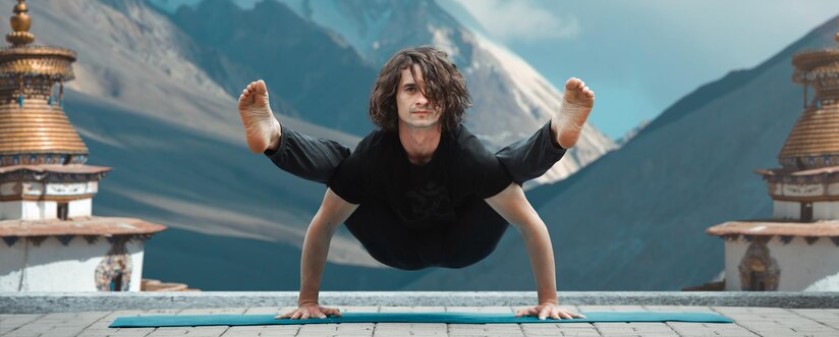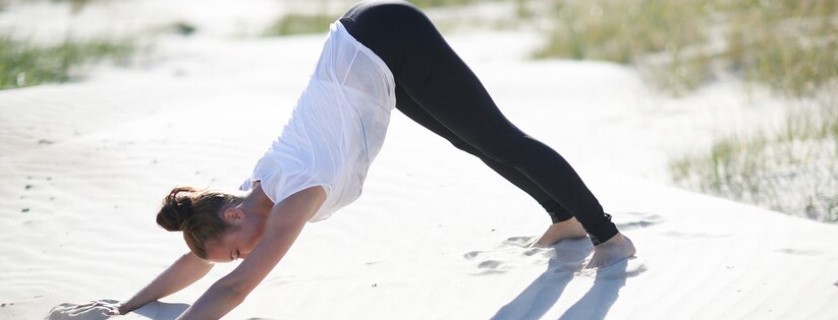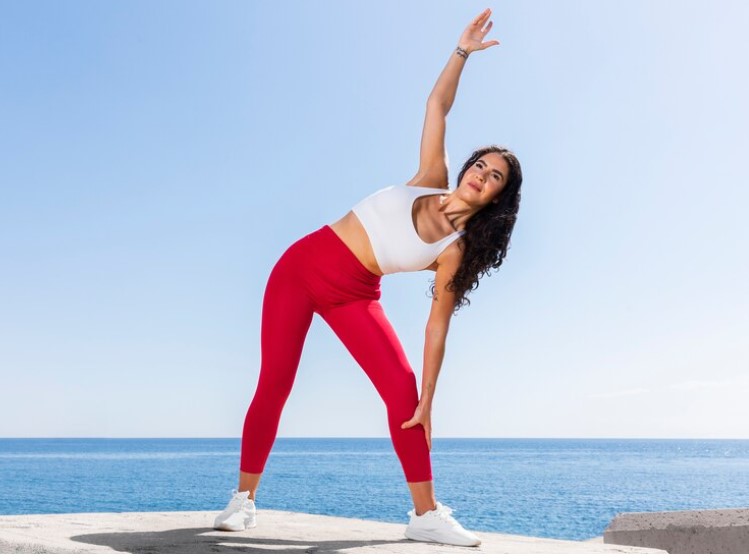Flexibility and balance are important components of overall health and fitness, as they can improve posture, reduce the risk of injury, and enhance athletic performance.
In this article, we will explore the benefits of flexibility and balance training and provide tips for incorporating these exercises into your fitness routine.
I. Benefits of Improving Flexibility and Balance

Flexibility and balance are important aspects of physical fitness that are often overlooked. Improving these skills can lead to a range of benefits, from reducing the risk of injury to improving athletic performance. In this article, we will discuss the benefits of improving flexibility and balance and provide tips for incorporating exercises into your fitness routine.
A. Benefits of Improving Flexibility and Balance:
- Reduced risk of injury: Improved flexibility and balance can help prevent injuries by reducing the risk of falls and overuse injuries. Flexibility exercises can help to increase joint mobility, while balance exercises can help to improve stability and coordination.
- Better posture: Good posture is important for overall health and can help prevent back pain and other musculoskeletal problems. Improving flexibility and balance can help to improve posture by strengthening the core and other muscles involved in maintaining proper alignment.
- Improved athletic performance: Flexibility and balance are important for many sports and activities. Improving these skills can help athletes to move more efficiently and with greater control, leading to improved performance. For example, dancers and gymnasts require a high degree of flexibility and balance in order to perform their routines.
B. Tips for Incorporating Exercises into Your Fitness Routine:
- Incorporate stretching into your warm-up and cool-down routines: Before and after your workout, take a few minutes to stretch the major muscle groups. This can help to improve flexibility and reduce the risk of injury.
- Try yoga or Pilates: These activities are great for improving flexibility and balance, and can also provide other benefits such as stress reduction and improved relaxation.
- Use balance equipment: Equipment such as balance boards, stability balls, and wobble boards can be used to challenge your balance and improve coordination.
- Practice single-leg exercises: Exercises such as single-leg squats and single-leg deadlifts can help to improve balance and stability.
- Incorporate balance and stability exercises into your strength training routine: Exercises such as planks, bird dogs, and side planks can help to improve balance and stability while also working the core and other muscles.
In conclusion, improving flexibility and balance is an important aspect of physical fitness that can lead to a range of benefits, including reduced risk of injury, better posture, and improved athletic performance. By incorporating the above tips into your fitness routine, you can begin to reap the benefits of these skills and improve your overall health and well-being.
II. The Best Exercises for Improving Flexibility

Improving flexibility is important for overall health and fitness. Stretching is an effective way to increase flexibility, reduce muscle tension, and prevent injury. Here are some of the best stretches for improving flexibility:
- Static stretching: Static stretching involves holding a stretch in one position for a period of time. This is a safe and effective way to improve flexibility. Examples of static stretches include the hamstring stretch, quadriceps stretch, and calf stretch.
- Dynamic stretching: Dynamic stretching involves moving through a range of motion to prepare the body for exercise. This is an effective way to improve flexibility and prevent injury. Examples of dynamic stretches include walking lunges, leg swings, and arm circles.
- Yoga: Yoga is a great way to improve flexibility and reduce stress. It involves a series of poses that can be modified for all fitness levels. Some of the most effective yoga poses for improving flexibility include downward-facing dog, pigeon pose, and seated forward bend.
- Pilates: Pilates is another effective way to improve flexibility, especially in the core muscles. It involves a series of controlled movements that help improve posture, balance, and flexibility. Some of the best Pilates exercises for improving flexibility include the spine stretch, hip opener, and spine twist.
To perform these stretches effectively, it is important to follow proper form and technique. Start with a warm-up before stretching and hold each stretch for 10-30 seconds. Repeat each stretch 2-3 times, and don’t push yourself too hard. Stretching should feel good, not painful.
By incorporating these stretches into your fitness routine, you can improve your flexibility and prevent injury. Remember to listen to your body and only stretch as far as you are comfortable. With regular practice, you can increase your range of motion and feel better in your body.
III. The Best Exercises for Improving Balance

Balance exercises are an essential component of any well-rounded fitness routine, as they not only improve overall physical fitness but also help prevent falls. Falls can be a major cause of injury and loss of independence, especially in older adults. By incorporating balance exercises into your workout routine, you can improve your balance, stability, and coordination. Here are some of the best exercises for improving balance:
- Single-Leg Standing: Single-leg standing is a simple yet effective exercise that helps improve balance and stability. To perform this exercise, stand on one leg and hold the position for as long as possible. You can start with 30 seconds and gradually increase the duration. Repeat on the other leg.
- Yoga: Yoga is a low-impact exercise that helps improve balance, flexibility, and strength. Many yoga poses require balance, such as Tree Pose and Warrior III. In Tree Pose, stand on one leg and place the sole of the other foot on the inside of the thigh or calf of the standing leg. In Warrior III, extend one leg behind you while leaning forward and lifting the opposite arm.
- Tai Chi: Tai Chi is a form of exercise that focuses on slow, gentle movements that help improve balance, flexibility, and coordination. Tai Chi involves a series of flowing movements and postures that help develop stability and control. Many Tai Chi exercises involve standing on one leg and shifting weight from one leg to the other.
- Heel-to-Toe Walk: The heel-to-toe walk is a simple yet challenging exercise that can improve balance and coordination. To perform this exercise, walk forward placing the heel of one foot directly in front of the toes of the other foot. Repeat for several steps, then turn around and walk back.
- Balance Board Exercises: Balance boards are a type of equipment designed to improve balance and coordination. They come in various shapes and sizes, and can be used for a wide range of exercises. Some popular balance board exercises include standing on one leg while balancing on the board, and using the board to perform squats or lunges.
Incorporating these balance exercises into your workout routine can help improve your balance, stability, and coordination, and reduce the risk of falls. Start with simple exercises and gradually increase the duration and intensity to challenge yourself and improve your balance even further. As with any exercise program, it’s important to consult with your doctor before starting a new routine, especially if you have a medical condition or injury.
IV. Tips for Incorporating Flexibility and Balance Exercises into Your Fitness Routine

If you’re looking to improve your overall fitness, adding flexibility and balance exercises to your routine can be a great way to do it. Here are some tips for incorporating these types of exercises into your fitness routine and staying motivated to do them regularly.
- Start small: If you’re new to flexibility and balance exercises, start with just a few minutes each day and gradually increase the amount of time you spend on them.
- Make it a habit: Try to do your flexibility and balance exercises at the same time every day. This will help make it a habit and ensure that you don’t forget to do them.
- Mix it up: Don’t be afraid to try new exercises and switch up your routine. This will help prevent boredom and keep you motivated.
- Set goals: Set specific goals for what you want to achieve with your flexibility and balance exercises. This will give you something to work towards and help keep you motivated.
- Use a timer: If you’re doing static stretches, use a timer to make sure you hold each stretch for the right amount of time. This will help ensure that you’re getting the full benefit of each stretch.
- Incorporate balance exercises into your daily activities: Try incorporating balance exercises into your daily activities, such as standing on one leg while brushing your teeth or doing squats while waiting in line.
- Use props: Use props like blocks, straps, or a chair to help you with your flexibility and balance exercises. This can make the exercises easier and more accessible, especially if you’re a beginner.
- Find a partner: Finding a partner to do your flexibility and balance exercises with can be a great way to stay motivated and make the exercises more fun.
Incorporating flexibility and balance exercises into your fitness routine doesn’t have to be difficult. With these tips, you can start making progress towards your fitness goals today. Remember, consistency is key, so be sure to make these exercises a regular part of your routine to see the best results.
Conclusion
Incorporating flexibility and balance exercises into your fitness routine is essential for overall health and fitness. By following the tips and exercises outlined in this article, you can improve your flexibility and balance, reduce your risk of injury, and enhance your athletic performance. Remember to start slowly and gradually increase the intensity of your workouts, set achievable goals, and stay motivated to make these exercises a regular part of your fitness routine. With consistency and dedication, you can achieve better flexibility and balance, and enjoy the many benefits they provide.



